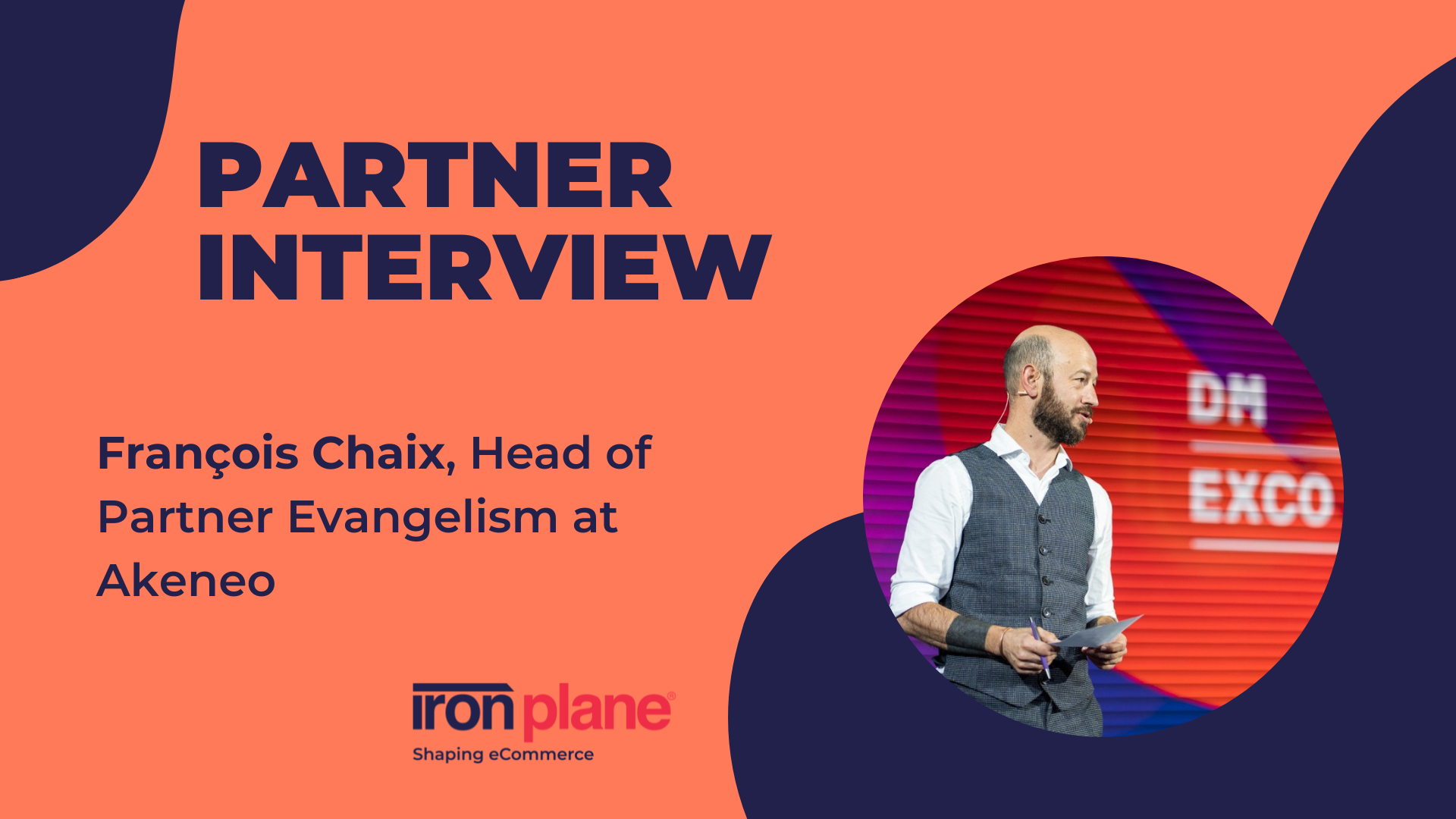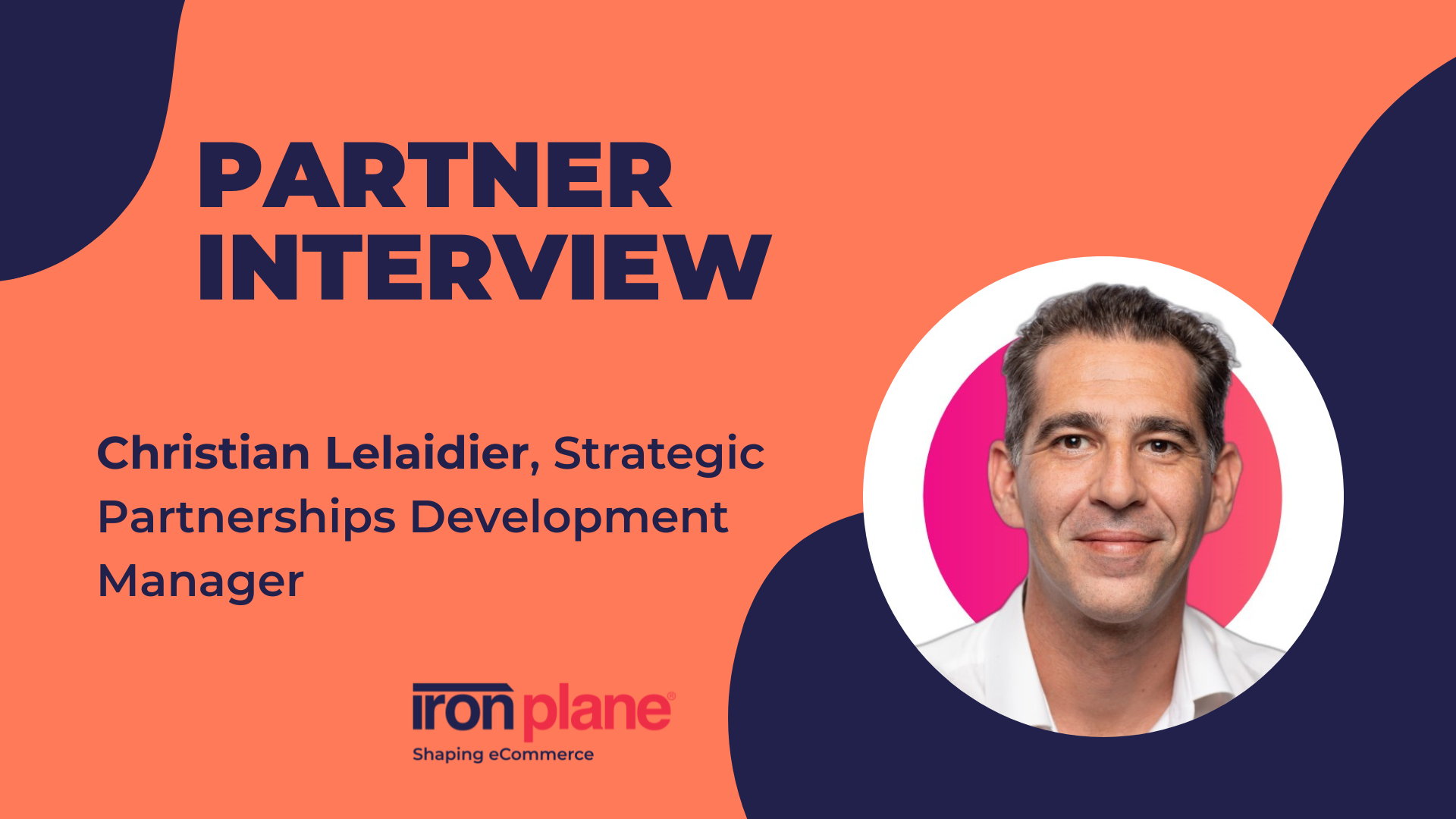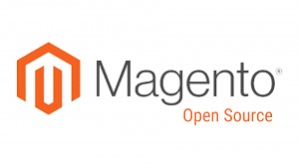
Introduction to François Chaix, Head of Partner Evangelism at Akeneo
Tim Bucciarelli:
Welcome back to Shaping eCommerce with IronPlane. I'm Tim Bucciarelli, the Director of Engagement at IronPlane, and today I'm pleased to be joined by François Chaix from Akeneo. And today we're going to be talking about Akeneo, what Akeneo does for its clients, and how it relates to the eCommerce world that IronPlane works in.
So François, thank you very much for joining us today on Shaping eCommerce. It's a pleasure having a chance to chat with you about Akeneo. If you could give everyone a brief intro about your background, that would be great.
François Chaix: Hey, Tim. Yeah, thanks for having me. So my name is François. I'm a PXM evangelist at Akeneo.
PXM evangelist for partners community. PXM stands for "Product Experience Management", but we come back to this later during this interview. I joined Akeneo eight years ago as a professional services manager, and then I moved to the channel team because I really wanted to work with our partner network.
And my role is now to enable all partners on Akeneo, on PIM, and PXM.
Tim Bucciarelli: Great. And so Akeneo works with agencies like IronPlane to spread the word about the value of the Akeneo PIM. And you also have some systems integrators who are agencies who have trained and learned how to actually implement the Akeneo platform itself. IronPlane is not there yet, but we certainly appreciate the value that a PIM can bring. So that's why we have partnered with Akeneo. If you could give us a little bit of an intro about the history of Akeneo, where it came from, and maybe even a little bit about where it's going.
Interview with François Chaix
François Chaix: Right. Just maybe before I jump into the history, very quickly, what is Akeneo, maybe for our listeners who don't know anything about Akeneo, who we are. We are a leading platform for product information management, so PIM platforms in general, and Akeneo in particular. We help businesses to manage and distribute let's say accurate, up-to-date, consistent product information across various channels. So we'll dig into more details during that interview. So the history very quickly.
Akeneo has been founded in 2013. We are about to celebrate our tenth anniversary next year. Three co-founders: Fred, Nico and Benoit. They used to - they come from the eCommerce world.
So they used to implement Magento websites in France. And actually the more they were dealing with customers re-platforming, or using Magento, the more they were facing a situation where their customer was struggling with product information. And I'm, I believe most of you guys, if you don't have a PIM system, either you use spreadsheet: Excel spreadsheet, or Google spreadsheet, or the ERP or the backend of your eCommerce website. And they were like, there is something missing.
Something might exist to really better, to better handle your product information. They were a big fan of open source business model because they really like Magento at that time. And so they'd look for an open source system which didn't exist. And that's pretty much how Akeneo was created. And one of the thing is that, what I really appreciate the team at Akeneo is that we are not here to create a need. We are here to, it's about filling a gap. It's about helping our customers to really, to better handle their product information and to solve their pains, their problem about product information management.
Tim Bucciarelli: Okay, so I'm going to just take a brief side step here from the topic at hand, because I've recently gone through and had some interviews with folks about the future of eCommerce. You mentioned that Akeneo was born out of that experience with eCommerce. And I've asked people about their view of the future of eCommerce.
So I'm curious, what is your view, what is your take on the future of eCommerce? And it can be very directly related to Akeneo if you'd like, but I'm just curious to get your input on that as well.
François Chaix: Well there is like two different things. One that is really related to Akeneo, and the rest is a bit more like a high level, but directly linked to Akeneo, I think when we're talking about eCommerce, I'm talking about not only eCommerce website. And I think omnichannel is becoming and will remain a must have. Might sound obvious, but this is something that every brand, every retailer should embrace. Because if you look at the buyer's journey today, it is omnichannel by default. And more than ever.
We have a couple of example. We conducted a B2C survey last year, and actually the result from that survey, a few figures: 75% of the customers agree that they find additional product information about a product when they look in multiple places. They also, there is another figure, say 80% of the consumer who wants to buy offline? They already have research product online before buying offline. So those two figures tell me that even if you still want to go offline and if you still want to go in the store, because you need to feel the product, which happens a lot of time, you still - the buyer will still look for product information somewhere else.
And that's what the other figures say, 75% of customers. They know that they will find additional pieces of information if they look for all the product, maybe on eCommerce website, maybe on marketplaces, maybe on social media. And long story short, I think the future of eCommerce would be to be everywhere.
And you need, as a brand or as a retailer, you need to make sure that you are everywhere, at least where your customers expect you to be, because that's where they look for your product in different places. And you should make, you need to make sure that you can provide as I said, consistent, complete, contextualized product information in all of those sales destination. Maybe in a global perspective, I think what we see on the eCommerce, whether, if we focus on the online, I like to think that we will buy stuff that we not used to buy online. We may buy cars online. We may buy real estate online, which is not possible today. But remember when eCommerce was starting 30 years ago, and I remember, do you want - do you really want to buy shoes online? No. No, you don't want to buy shoes.
But that was the reality at that time. And now there is like tons of vendors. The future for me is like, we will buy anything online. I think the trend is also to move into a more like a subscription pay license, instead of buying a product. There is like a lot of stores in France when you can actually, there's one sport brand in France or sports retailer, they offer you the possibility to pay like, I don't know, twenty euros a month, and then you can use a product. I think the subscription based license will become something and I'm also thinking about secondhand product online will grow. So yeah, that's mostly something that is not really linked to Akeneo. If we focus on Akeneo, I think the omnichannel is the future for sure. You need to embrace now.
Tim Bucciarelli: It's great because on the one hand, you totally tapped into what a lot of the other people that I spoke to said, which was, it's not so much going to be eCommerce anymore.
It's going to be commerce. It is omnichannel, it's totally integrated, and it's going to be, who can get the experience consistently across every channel as richly filled with information and visuals that's consistent. But one thing that I think maybe wasn't top of mind for everyone was this idea of subscriptions, but also reducing your footprint through the reuse of products.
And I think that's really very interesting as a general topic for eCommerce. So thank you for that. I'll add that to our - I might add this as a clip to our Future of eCommerce.
François Chaix: I think we're both aligned, because if I want to - and I mentioned that sport brand, I can buy a subscription, use a bike, or use a pair of skies just for one winter, for one summer, and then return it, and then I use that kind of product that's linked to the footprint that's linked to the secondhand.
That might be something we see in the future.
Tim Bucciarelli: Absolutely. And like, I have two boys who grow up very quickly and so the skates they wear this year will not fit them next year.
François Chaix: Yeah.
Tim Bucciarelli: And so I don't want to have to go out and buy a new pair every single year if I can just subscribe, and pay, and then use them, give them back. Yeah, I, okay. Good. All right, we'll add that. Okay, let's stay on focus here though. So Akeneo and PIM. I guess you already identified some of the challenges. When they started Akeneo, what were the pain points that they were really trying to solve for? Uniquely. Because I assume when they started Akeneo, there were other product information management systems that were out there.
But what did the founders want to do differently with Akeneo, and what problems were they really solving?
François Chaix: We wanted to make it simple. We wanted to make it simple for our users. And so we have, if you browse our website, you will see we have Julia, which is our main persona. And everything we do on Akeneo on the project perspective is to help Julia with her day-to-day work.
We're not here to save the world. We're here to help them, and to better work and to better enrich the product information. Initially, it was making our, helping our users and helping our customers to - helping them to better handle the product information management. Avoid using Excel files, avoid using ERP, old platforms, or outdated platform, into one single and very easy to use user interface, instead of dealing with Excel spreadsheets and so on.
So we really started from that assessment: my customer is struggling with product information. They deal with tons of Excel file. Let's forget about it, and let's offer them one single platform that will help them to better handle the product information. That was the main idea at the beginning.
Tim Bucciarelli: Okay. So it started out as open source. Does it remain open source today, or is—
François Chaix: It does remain open source. It remains open source. Being a SaaS product doesn't mean you cannot be open source. The open source DNA or the open source point of view.
I don't know the name in English, sorry. I have it here, but I don't, whatever. Being open source really means that, you know, we're open. And actually our code is open. So that's mainly the thing. We are a SaaS company now, but we are still on open source. We started as open source.
We remain on open source. One of the thing with the open source that you have that free version, that actually helped us at the beginning in the awareness and helped us to communicate on Akeneo. The community is still available. But we also want to make the life easier for our customers.
And the SaaS approach is something that all of our customers are looking for.
Tim Bucciarelli: Yeah, yep. Okay. And we'll get a little bit more into detail on that. So one of the things that is sometimes helpful is if you can give examples of existing customers. Whether you name them, it doesn't really matter, but maybe just use cases that you have come across that you feel are particularly worth noting as we think of Akeneo and the value that it brings.
François Chaix: Yeah, absolutely. There's a few names that I can mention for sure. The beauty is that we work with many different kind of industries. Whether it's a B2C or a B2B, I'll come back to this later, but don't ask yourself, "Do I fit for a PIM system?" Because if you're selling any product, you already fit with a PIM system.
So we work with John Deere, we work with Forever 21 with Zappos. 800 Flowers, for example. They were like different kind of product, different kind of business type. B2C, B2B, distributors, retailers, or brands. And at some point you need to manage your product information. And if you don't use Akeneo today, you are already managing your product information.
Again, the idea is here, how can we help you to better handle your product information? So most of the time, and what we see from our customers and the feedback from our customers, they've seen let's say three, three main positive impacts to make it easy to understand.
The first one is the time to market. Ask yourself, how long does it take you to get your product on the market? If you are a retailer, how long does it take you to gather all the information you receive from your suppliers? If you're a brand, how long does it take you to export the data to many of your suppliers?
Usually we see an increase of 60%, 80% in productivity gain, and the fact that we can accelerate the time to market, that's really impressive. But think about it, if you stop using Excel files or ERP, it can accelerate the time to market drastically. So accelerate the time to market means that you can put your product online faster. No more losing sales. A second impact would be on the business impact and the conversion rate, definitely. So we've seen customers improving their, more than like 50% of their conversion rate when they start to improve the quality of the product information. If I want to sell my product online or in any marketplace, I need to make sure that I can provide the best product information.
At Akeneo we say there is three level of product information: technical information, the very basic information. Usage information, "How can I use a product?" And then emotional information. Once you know you're capable of providing those three level of product information, the buyers feel more secure.
They know what to buy, they know how to use it, they have everything they need. And when I'm saying emotional information, there could be video, there could be a picture or whatsoever. But I need to have all of those product information to buy the product. So the conversion rate is something that we improve.
And the third thing directly linked to conversion rate would be the return rate. Nobody likes the return rate. I'm pretty sure, Tim, you've already bought product online and then you return the product. You have returned the product cause it was not what you expected. And everybody knows how expensive it is to deal with the return rate.
I see two things. It already cost a lot because I have to get the product and maybe resend a new one. But the problem is that maybe I will return the product and not going to ask for a new one, because I will lose trust with that merchant. That happened to me in the past. I was looking for a waterproof jacket because I live in a pretty rainy place, and I go everywhere by bike.
So I was looking for that waterproof jacket. Found a very, very good one on the sports marketplace. It was labeled GORE-TEX. Fine, this is the one I know I want. Received the jacket, it was not waterproof at all. And I called the merchant and say, "What happened?" And I say "Well, there is a problem." And it's not waterproof, but there's a problem on the website.
Yeah, obviously. And so I returned the product, but I don't want to buy with that merchant anymore because if you fail me once, what tells me you won't be failing me twice? So there's really something to consider here. If the product information is not correct, at best, they return the product and they will keep buying at your place.
Tim Bucciarelli: So it's interesting that it's not just about storing data and syndicating that data out to your channels. It's also enabling efficiency and quality. That's a, that's something that I hadn't thought of. So I know enough about the Akeneo platform that there are a number of tools that can be utilized that reduce the amount of time it takes to do steps A, B, C, and D related to your product information.
That efficiency allows you then to spend more time focused on the quality of the data and the information in each of those parts. But there are also tools, I think, and automations that help make that even easier? Is that an accurate way to describe it?
François Chaix: Yeah. So it's not only about only storing product information in one place.
It's about making sure that you can involve different teams in the process of product enrichment. If you look at your commerce stack today, where do you sell your product? And so let's assume that you sell your product on eCommerce website on the marketplace. You have social media and you also sell your product to different retailers.
So that's already four channels. Four channels probably means four teams that work separately. And most of the time they work in silos. So the social media work on this side, the eCommerce team work on the other side. The people in charge of the marketplace, they work differently. And then people in charge of sending product information to retailers, they have their own way to do it. But if you look at it, they all deal with product information.
They should also be working together. And so by using Akeneo, you can have all those people working together. They have access, thanks to all the right information, the workflow validation, project management tool. They can all better work together, use the same basic product information, like the technical one. And then, for each of them, each of the channels you will contextualize. You will adapt the content for those different channels.
Because, you know, the information you will be sending on your eCommerce website, you own your eCommerce website. So you can define the size of the picture, you can define the description, you can do anything you want. But if you want to sell your product to marketplaces, Amazon, or anyone, then you have to comply with their requirements.
And maybe description will have to be different. The pictures will have to be different. And if you want to explore data on social media, you don't display the product the same way. And that's the same for the retailers. They all expect different kind of product information. So you need to make sure that all those people can collaborate together.
That's what we offer on Akeneo and that's where we, what we call product experience management. That's the practice. That's what's happening backstage, all the workflow and all the process you will put in place. That's what we call product experience management. Remember, 20 years ago we had this eCommerce manager.
And that was a new profession. And now as an eCommerce manager, you know how to pay attention to SEO. You know how to pay attention to the size of a picture, whatsoever. So you know how to display the product information on your eCommerce website. Being an expert in PXM is making sure that you can not only display the right product information for the eCommerce website, but also to orchestrate all those product information for different sales destinations. So that's what we call when we are talking about product experience management.
Tim Bucciarelli: Yeah, that's helpful. And when we're talking acronyms, so PXM, thank you. You explained that. P-I-M, PIM. We know that now. I just want to touch on a little bit of the DAM, the D-A-M. Only because it sometimes can fit within the PIM environment if it's relatively simple needs that a company has. But so DAM, Digital Asset Management, is something that's usually paired with a PIM. But could you just touch a little bit on that, and where that fits in this?
François Chaix: Yeah, so a DAM will be connected to a PIM system.
So back in years, we saw sometimes DAM being used as a PIM system. Because PIM didn't exist at that time. So we saw some customers moving from DAM to PIM because, hey, I have a DAM, so I'm handle all the assets linked to my product. How about the pieces of information linked to my assets or description and whatsoever? They try to use the DAM system as a PIM system, but the problem is that a DAM is used to handle the asset life cycle from the photo shooting until you can use that picture in many usage, I would say for social media, for eCommerce website, or for your print catalog. So it's really linked to the asset. We have what we call the asset manager on Akeneo, but this is really like DAM, okay? Let's make it simple.
We're not here to compete against DAM system. We would connect Akeneo with a DAM system. It's a library of media that we offer on Akeneo, and then from the asset manager, then you can link the asset to all the different products. But if you already have a DAM system, stick with your DAM system. And then we will be working with the DAM system. If you have really light needs in terms of DAM capabilities, there might be an option to use Akeneo for that, but I don't pretend to be a DAM system.
Tim Bucciarelli: Yeah okay, great. That's very helpful. And so our audience here is merchants, typically. eCommerce merchants, or commerce merchants now, we'll refer to them. And many of them are wondering, even though we say, "If you sell products, a PIM is relevant to your business."
Okay, we understand that. So it's very broadly applicable to many different businesses. But if you could walk me through the reasons why a company should want to embrace a PIM. Because it's also - it's an investment. And so they want to make sure that their needs are going to be met by this new system they're investing in.
François Chaix: Yeah so, let's say five points why you should start with a PIM. First point, put your customer experience first. As I said, the customers today and the buyers, they want to have many touchpoints. They want seamless, high quality experiences across all the touchpoints.
They're very picky. And they expect you to be on social media. They expect you to be on eCommerce. And you need to make sure that you can give to that customer the right technical, the instructional, the emotional information that I mentioned before about the product that you sell.
Providing all of this can be a tall order, but the right PIM tool can centralize all your product information and ensure every customer touchpoint is optimized and up to date. And I think if you are in the process of digital transformation, it should start with a PIM because it ensures that you are putting your customer and their expenses with your brand and product at the forefront of your transformation.
So first, yeah, put the customer experience first. We usually say at Akeneo, there is no good customer experience without a good product experience. You cannot provide a good customer experience if you don't provide them with a good product experience. A second thing why you should invest in PIM?
Don't underestimate how the poor data you may have might affect your business. Your poor data is actually affecting more than you think. High quality product information fuels positive online customer experiences, feeds research optimization, analytics, and it's also required for filter navigation.
And if you look for product, you cannot find your product if you don't have the right product information. So beginning a transformation with a PIM solution will ensure all of these product data issues are—
Tim Bucciarelli: That's one of my most frustrating experiences online, is: you have fifty different filters, right? On the left side that you can filter your products by.
But nowadays, I'm frequently disappointed when I tick a box for a filter, no, I know that this product should be there, but it's not. So I have to uncheck it and then I have to go find it.
François Chaix: And it's all about - it's all about refining the data. When you start a PIM project, there is a lot of work into refining the data.
Sometimes it's faster if you take the technical data and you put everything in a text area, right? It's faster. And then you can move faster and display it on a website in a proper way. But you will lose your customers because you cannot filter on technical data if it's all fit in a text area. That's a very concrete example here. But what we help here is to turn your poor data into rich data, so that again, you can filter, you can search, and that will help your customer to better understand what kind of product they will buy. Another thing, increase your time to value. PIM solutions tend to be cheaper, faster to launch.
If we compare that to MDM, for example, I don't know if you're familiar with MDM for master data management. It was all like big software that handle any kind of data related to an organization: financial data, HR data. You mentioned DAM versus PIM, then there is also MDM versus PIM.
You might be tempted to go for the MDM because if it does everything, it might be doing the job for a PIM system, which is not the case. Because it takes too long to implement. It's a total different project. So if you really want to focus on customer facing data, you should definitely go for a PIM.
The launch and the time of implementation of a PIM system should not take you more than six months, something like that. So you can see the benefit right away and the time to value will be much lower if you choose the right solution. So that's another thing I would say. And there's two last point: get in the ground floor with cutting edge technology.
By doing this, I mean that Akeneo is designed to be easily integrable or integrated to numerous other system. A PIM by itself doesn't mean anything. We need to be able to connect with third party application. And we have multiple pre-built connectors to eCommerce platform, DAM system, marketplaces, data pools, CSM, CMS, and print solution.
And so starting a digital transformation with a modern PIM like Akeneo means you have access to a wide ecosystem of technology partner that will ease your integration efforts and provide a wide range of option. Should your transformation strategy change? It depends, but the fact that Akeneo can be integrated with third party application and the fact that we're API first, it's a real asset in your global strategy.
And I think the last thing is provide a new way to work. I cannot explain that, but think about your employees as well. Nobody wants to do copy paste and Excel files every day. I think that also one of the things that we resolve, our customers, when they use Akeneo, they see the team happy to use Akeneo actually, and being more involved into the day-to-day work.
Stop using Excel files, stop doing copy paste. You don't hire a team of eCommerce expert to do copy paste. You hire them and you hire your marketing team to create value. To create description, to create pictures or assets or whatsoever. You don't hire a team to do copy paste. And so I think by providing a new way to work, you can also involve your teams in the process and they'll be happy to work.
So that's another thing that really makes the difference.
Tim Bucciarelli: Yeah, I think for me, it seems like many of the people I speak to feel like we make due with what we have, we make due with our ERP and our Excel spreadsheets. We make due with our eCommerce platform, and our Excel spreadsheets or with our eCommerce platform that is now linked to our ERP. And there's something to be said for that. If you can make do, and it's not a priority and you're not selling to fifteen or four different channels.
But it does seem like there is a use case here that's pretty broad, that a lot of people, they know the pain, but they just don't feel it every day because they're getting by with their existing systems.
François Chaix: Because they've done it forever.
Tim Bucciarelli: Yeah, that's right. They're also missing the opportunity of dramatically reducing or improving efficiency and improving product information quality and eventually the experience for their customers. So I think it's a very interesting product.
François Chaix: Think about your business strategy, how you want to grow your business. There's like different example. One example, I want to accelerate the time to market. I'm a retailer. I want to onboard more supplier. I want to extend my product catalog.
The second case would be, I want to open a new eCommerce website, or I want to switch from the B2B to B2C or vice versa, or, I want to sell my product better, I would say. And then the third case, I want to go international. I want to be able to sell my product anywhere. So if you keep on asking, and ask yourself, what do you need to be successful with all those business strategy?
How you will be able to activate your product information in all this business strategy. If you don't have the right tool, if you don't have the right system in play, the workflow - because at the end of the day, all this business strategy, they will be successful as long as the product data is ready.
Because if I'm successful in accelerating the time to market, it's because my product data is ready to be published. If I'm successful in selling my product better, it's because I was able to provide concrete, consistent, complete product information. And if I'm successful being international, it's because my product content is localized.
Not only translated, but localized to fit my local culture. And so you need to have a proper strategy in place. That's what we call product activation. Product activation is the strategy you will put in place to activate those different sales destination, maybe. And below that, PXM is the practice that you will put in place to make sure that you can prepare your product information for all to be successful with all these business strategy.
Tim Bucciarelli: I know you mentioned that Akeneo has a free version that people can sign up for and try out if they would like.
François Chaix: Yeah. We have the free trial available on our website and one of the good thing: we don't just give you Akeneo as is. There is free tutorials that you can follow by using the free trial and that will help you to get used to how to use Akeneo based on certain things. Like you want to go international, you want accelerate the time to market, this is basically the kind of feature you'd be using. So it's not like we just give it to you. We also give you guidance, I would say, how to use it. And yes, that's very helpful to better know about PIM and Akeneo.
Tim: Yeah, okay. All of the pricing information generally is also on your website, but I also know that it can vary. Most of our technology partners, their pricing varies depending on the scale of your business and the usage of the product. Is that accurate?
François Chaix: Yeah, it really depends on the size of the organization.
Obviously there is an entry price that is on the website of 25,000 for the growth edition. But then, for larger organization, it's better to come back to us.
Tim Bucciarelli: Yeah, yep. And as we work with the Magento platform and the BigCommerce platform, we know that the connections there exist with Akeneo already.
François Chaix: So I mentioned the prebuilt connectors, who is our perfect example. And so we have a pre-built connector with with Adobe, Magento, whatever, you name it. And we have also what we call an app with BigCommerce. So the only difference is that the BigCommerce app can be activated through the user interface, so there is no technical configuration.
And then you can activate the application directly from Akeneo and so that you can link your Akeneo team to your BigCommerce.
Tim Bucciarelli: And with Magento, it requires—
François Chaix: It's easy to implement, but it does require a technical configuration.
Tim Bucciarelli: Yeah. We also do a little bit of work in the composable space, and I noticed that you're a member of the MACH Alliance as well, so that's something that's also very front and center for Akeneo in the future of the development?
François Chaix: We used to talk about best-of-breed in the past.
And I believe composable commerce is the new best-of-breed. But it totally makes sense because if you decouple the the front end from the back end, it really makes sense to start your composable journey with your data and with with Akeneo. Because this is where you'll be preparing your product information.
And then you'll be using different bricks and different system part of your composable tech stack to explore the data thanks to our API, to those different eCommerce or maybe any other system that will be part of your new composable stack. So, what we say, that PIM is the keystone for commerce because everything starts with the data anyway.
Tim Bucciarelli: Yeah, good. I think that gives a really good rundown of the Akeneo product and PIMs in general and the value they can bring to businesses. Well, thank you again François for joining us.
François Chaix: Yeah, thanks for your time.
For more insights on eCommerce tools and for a free consultation, visit www.ironplane.com, follow us on LinkedIn, and subscribe to our YouTube channel.









